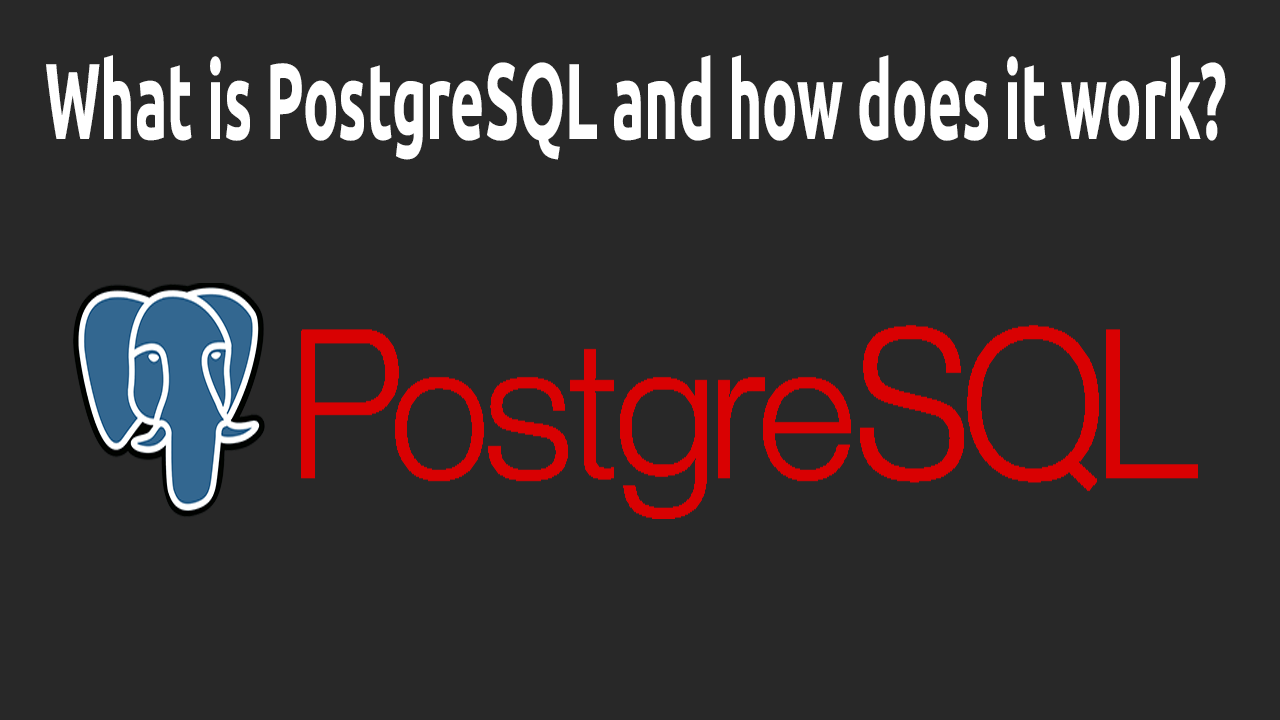What is PostgreSQL and how does it work?

PostgreSQL is an object—relational database management system (ORDBMS), the most developed open DBMS in the world. It has an open source code and is an alternative to commercial databases.
This object-relational system is very popular because it is free and easy to manage.
Also, you can always connect graphical management to it and work remotely with databases. We'll talk about this a little later.
Who needs PostgreSQL?
As a rule , it is used by the following type of personnel:
- Backend developers
- Database Administrators and Developers
- DevOps engineers
Each of these three types uses PostgreSQL in its own field. There are also other types of people who work with this management system.
What are the advantages?
This control system has a number of advantages because of which it has become so popular.
- Unlimited database support
- A free analogue of Oracle Database
- Inheritance
- Easy extensibility
- Support for multiple data types
These are not all the advantages, but only a few. Let's go through each of them briefly.
Unlimited database support
Here, in principle, an explanation is not required.
Analog of Oracle Database
Both systems are adapted to large projects and high load. But there is a difference: they store data differently, provide different tools and have different capabilities. An important feature of PostgreSQL is that this system is feature-rich: this is what projects with broad functionality are called.
Inheritance
Implemented at the table level. Tables can inherit characteristics and sets of fields from other (parent) tables
Easy extensibility
The developer can write his own types for the DBMS and their transformations, operations, etc.
Support for multiple data types
It has support for XML, JSON and NoSQL databases as well as other databases. Thanks to what she does with her, you will experience ease in work.
What are the limitations?
Where there are pros there are also cons. However, here they can be considered very weak disadvantages because there are not many restrictions.
For the most part, the restrictions only affect the size of the table/field/record. As well as the maximum number of fields.
I will not fully describe each restriction because it can easily be found on the PostgreSQL website
What features does it have?
This control system has a number of features that it is better to be familiar with at least superficially. To do this, I will list a few of them and briefly describe what each of the features means.
Functions
The code blocks are executable on the server and not on the DB client. They can be written in various programming languages. They can be executed with the rights of the creator or with the rights of the current user.
Indexes
PostgreSQL includes the following types: B-tree, hash, R-tree, GiST, GIN. If necessary, you can create new types of indexes.
Multiversion
In PostgreSQL, it is possible to simultaneously modify the database by several users using the multiversion mechanism. (MVCC)
Is PostgreSQL suitable for a small site?
This question may arise because most often developers use MySQL or MariaDB when creating small projects. And it will not be logical to use it for a simple site with a small visit, because it will be easier to work with a small number of users with a couple of the above.
Everything changes if the project is complex. In this case, the use of a couple of the above may cause some difficulties in the work. This is due to the fact that PostgreSQL is supported by many development tools, while MySQL and MariaDB are not always included in these tools.
Getting started in PostgreSQL
You can download it from the official website. The download page will present download versions for different operating systems. After downloading, you will need a place to host, for example, you can rent a VPS server from us and place it on it. An ordinary user may need help to install and configure PostgreSQL. Also, of course, it is worth knowing how roles and permissions work.
These are all quite complex processes that take a lot of time to study.
However, we have prepared a video for you with the installation and a little introduction to this system.
You can find out how the installation is done in the following video.
Conclusion
In this article, we learned what PostgreSQL is. What advantages and disadvantages it has, we looked at the features and also answered the question whether it is worth using it in the development of small projects. In the following, we will look at how you can connect the graphical interface and use it for work.

